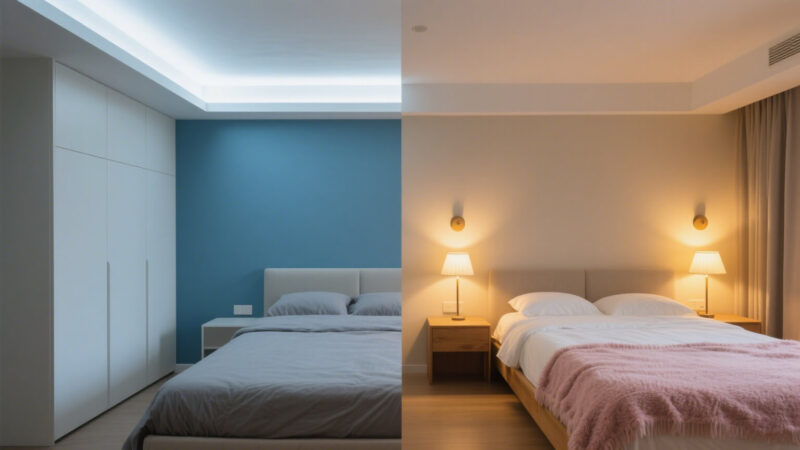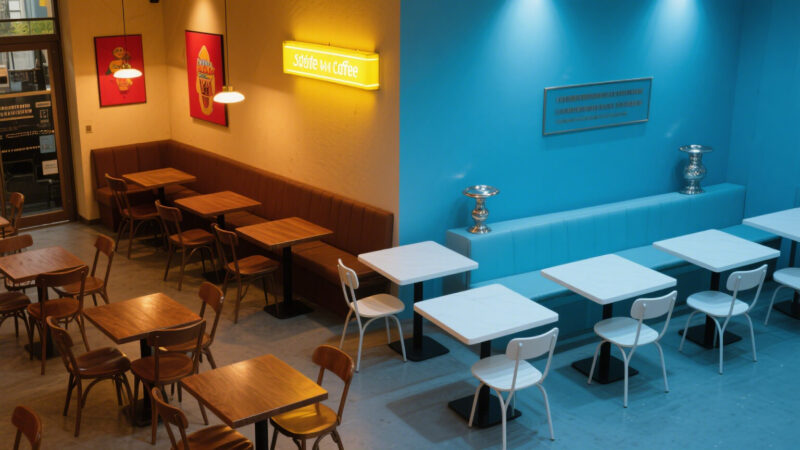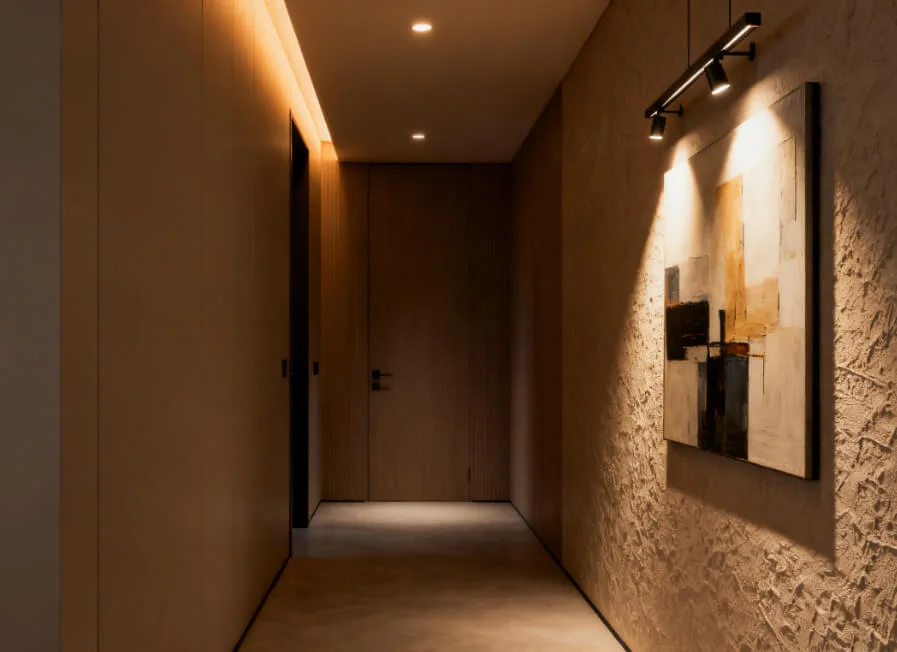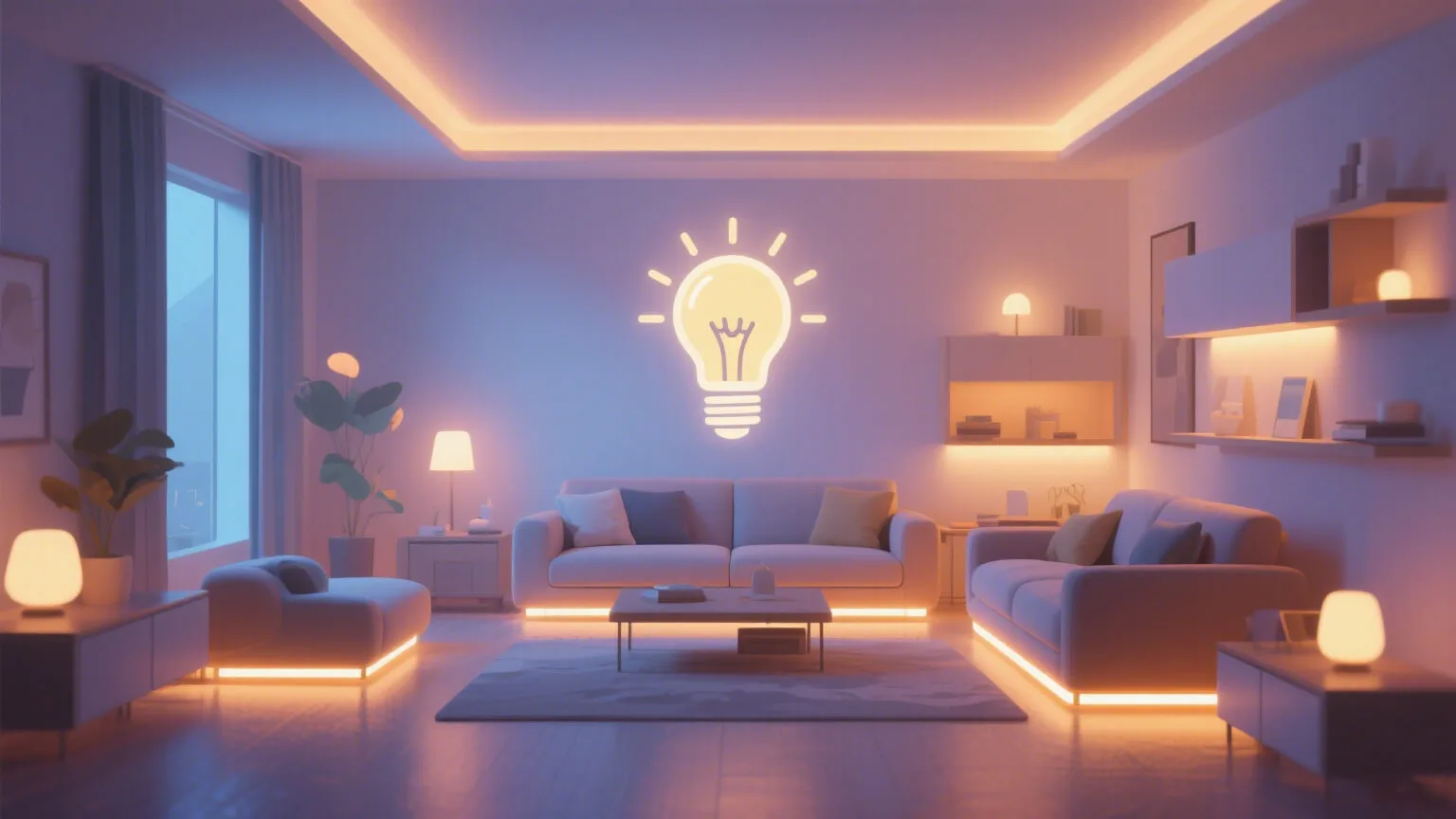Choosing the right lighting for your home or workspace isn’t just about brightness—color temperature (measured in Kelvin, K) plays a crucial role in setting the mood, productivity, and even health.
But what’s the difference between warm light and cool light? Which one should you use in the living room, bedroom, office, or kitchen?
This guide will break it all down, helping you pick the perfect lighting for every space.
1. Warm Light vs. Cool Light: Key Differences
| Feature | Warm Light (2700K–3500K) | Cool Light (4000K–6500K+) |
|---|---|---|
| Color Tone | Soft yellow/amber | Bright white/bluish |
| Mood & Feel | Cozy, relaxing, intimate | Energizing, alert, clinical |
| Best For | Bedrooms, living rooms, dining areas | Offices, kitchens, task lighting |
| Blue Light | Low (gentler on eyes) | High (can cause eye strain) |
| Common Uses | Ambient lighting, accent lighting | Workspaces, hospitals, retail |
💡 Quick Tip:
-
Lower Kelvin (2700K–3500K) = Warmer, yellower light
-
Higher Kelvin (4000K–6500K) = Cooler, whiter/bluer light
2. Where to Use Warm Light (2700K–3500K)
🛏️ Bedrooms
-
Why? Warm light mimics sunset, promoting melatonin production for better sleep.
-
Best Choice: 2700K–3000K dimmable bulbs or bedside lamps.
🛋️ Living Rooms & Dining Areas
-
Why? Creates a cozy, inviting atmosphere—perfect for relaxation and socializing.
-
Best Choice: 2700K–3500K LED bulbs, warm-white string lights.

🍽️ Restaurants & Cafés
-
Why? Warm lighting enhances comfort, making food look more appetizing.
-
Best Choice: 3000K Edison bulbs or warm pendant lights.

3. Where to Use Cool Light (4000K–6500K+)
💻 Home Office & Study Areas
-
Why? Cool light boosts alertness and focus, mimicking daylight.
-
Best Choice: 5000K–6000K task lighting (desk lamps, overhead LEDs).
🍳 Kitchens & Bathrooms
-
Why? Bright, white light improves visibility for cooking, shaving, or makeup.
-
Best Choice: 4000K–5000K under-cabinet lights or vanity mirrors.
🏥 Hospitals & Retail Stores
-
Why? High-Kelvin lighting (5000K+) enhances visibility and color accuracy.
-
Best Choice: 6500K LEDs for clean, clinical environments.
4. What About Neutral White (3500K–4000K)?
A middle-ground option that works well in:
-
Hallways & entryways (not too warm, not too cold)
-
Garages & workshops (balanced brightness)
-
Retail displays (shows colors accurately without being harsh)
5. Smart Lighting: The Best of Both Worlds
If you can’t decide, smart bulbs (like Philips Hue or LIFX) let you adjust color temperature from warm (2700K) to cool (6500K) with an app or voice control.
✅ Morning/Day: 5000K for energy
✅ Evening/Night: 2700K for relaxation
6. Common Lighting Mistakes to Avoid
❌ Using only cool white in bedrooms → Disrupts sleep.
❌ Using warm light in workspaces → Can cause drowsiness.
❌ Ignoring CRI (Color Rendering Index) → Poor-quality LEDs make colors look dull.
💡 Pro Tip: Always choose LEDs with CRI >90 for the most natural colors.
7. Final Verdict: Which Should You Choose?
| Room | Recommended Color Temp |
|---|---|
| Bedroom | 2700K–3000K (Warm) |
| Living Room | 2700K–3500K (Warm) |
| Kitchen | 4000K–5000K (Cool/Neutral) |
| Home Office | 5000K–6000K (Cool) |
| Bathroom | 4000K–5000K (Neutral) |
🔑 Key Takeaway:
-
Warm light = Relaxation
-
Cool light = Productivity
-
Smart bulbs = Flexibility



